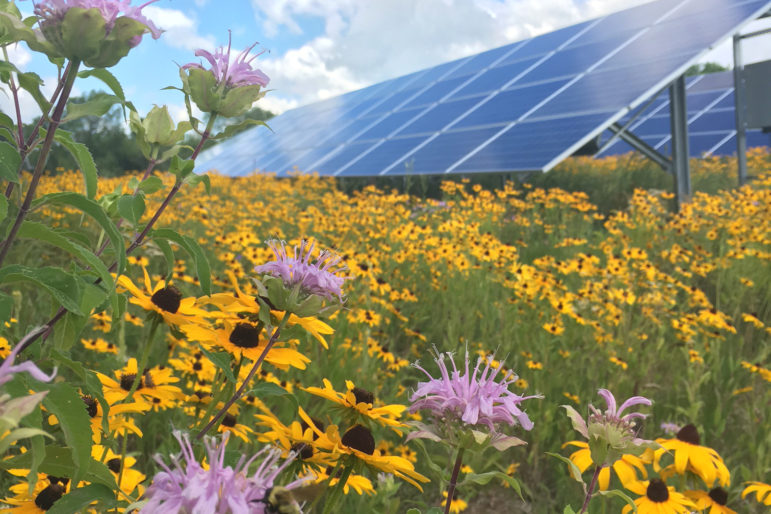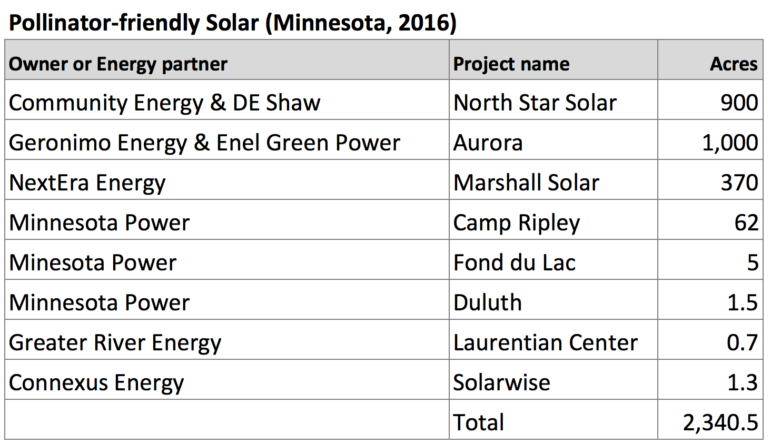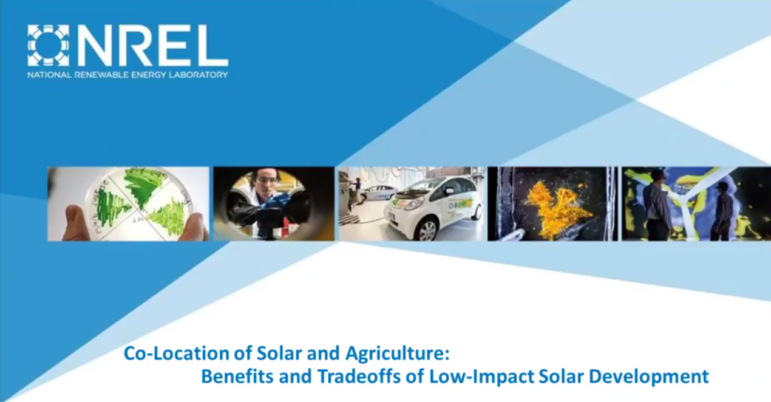
2016 was the first year of Minnesota’s solar bloom — but there’s plenty more to come. While even more solar sites are planned to be built in the years ahead, tens of millions of native flowers and short-growing meadow grasses will be taking root under and around the panels. Look for black-eyed susans to develop faster than the rest, followed by purple prairie clover, partridge pea, butterfly weed, and more.
This abundant habitat for pollinators — the bees and other insects that move pollen between flowering plants — will be equivalent to more than 1,400,000 six foot by 12 foot backyard pollinator gardens. Using less than 0.1 percent of Minnesota’s farmland, pollinator-friendly solar can help increase the yields of crops like tomatoes, melons, and squash, grown in adjacent fields.
Learning from work done in the United Kingdom, Minnesota is a national leader on solar development that is co-located with, and provides benefits to, agriculture. With the support of agricultural leaders and groups including Representative Rod Hamilton (R–Mountain Lake), Senator Dan Sparks (DFL–Austin), Minnesota Corn Growers Association, and Minnesota Farmers Union, Fresh Energy and Audubon Minnesota helped establish a statewide standard for vegetation on solar sites.
The U.S. Department of Energy recently highlighted Fresh Energy’s work in this area during a well-attended national webinar, “Co-location of Solar and Agriculture,” and pollinator-friendly solar projects are now being proposed and built in Wisconsin, Iowa, Maryland, and Vermont.
Find out how your area can have more pollinator-friendly solar by inviting Fresh Energy to present to your church, civic, or business group. Contact Rob Davis, davis@fresh-energy.org or 651 726 7565.



